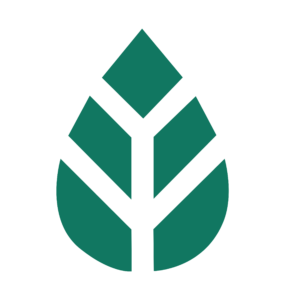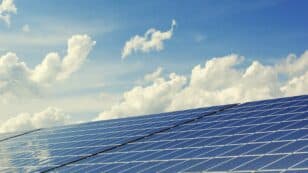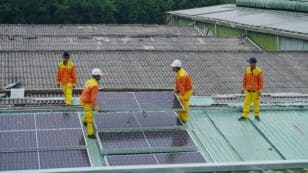
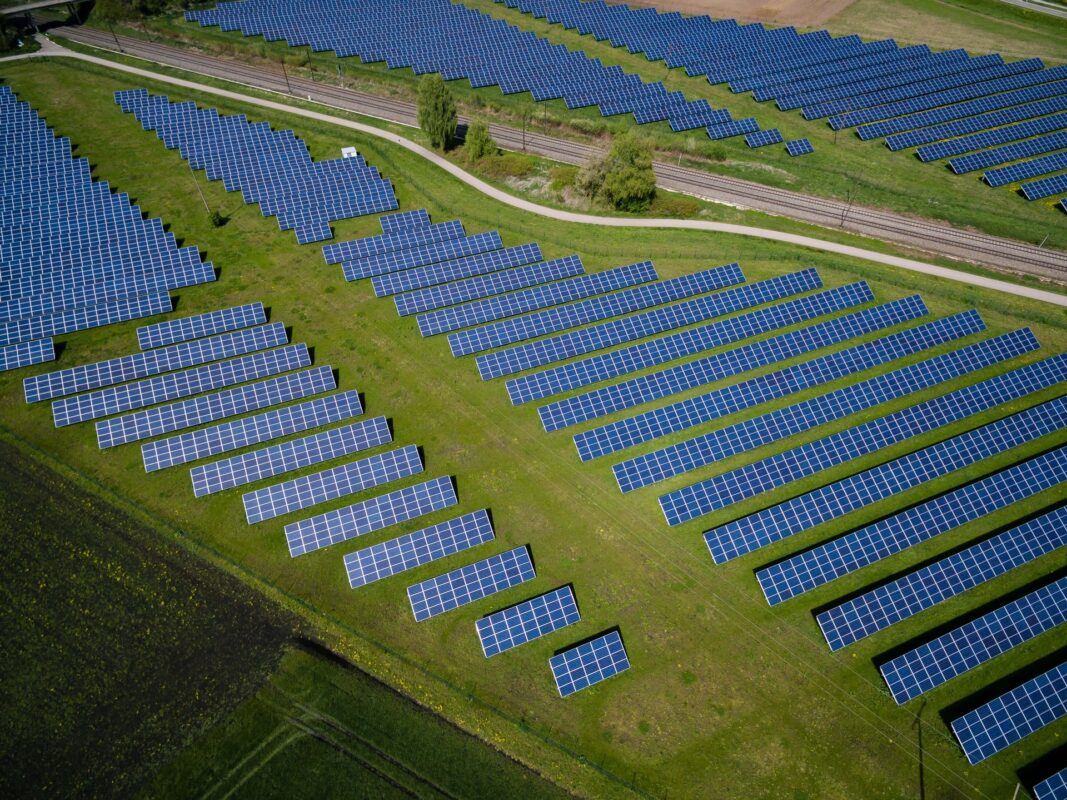
What Is Community Solar? (Everything You Need to Know in 2024)
In this EcoWatch guide on community solar, you’ll learn:
- What the difference between on-site vs off-site community solar is
- Whether ownership models are better than subscription models
- What types of residents can benefit the most from community solar
- How to find out if community solar is available near you
This EcoWatch guide has helped thousands of indecisive homeowners determine whether community solar can better suit their needs compared to installing rooftop solar. Let’s get started!
Each product and or company featured here has been independently selected by the writer. You can learn more about our review methodology here. If you make a purchase using the links included, we may earn commission.
What is Community Solar?
Community solar is a term used to describe photovoltaic and renewable energy systems that are shared by many electric customers, including homeowners, renters, businesses, nonprofit organizations and more. Electricity savings and other benefits from the solar project are split among its shareholders and solar subscribers at a rate based on the level of investment.
When starting a community solar project, solar developers will establish the geographic area and service territory from which consumers are eligible to join. Some programs have installed multiple solar power systems in the same area, allowing a larger number of shareholders and stakeholders.

SunPower

Nationwide Service
Average cost
Pros
- Most efficient panels on the market
- National coverage
- Cradle to Cradle sustainability certification
- Great warranty coverage
Cons
- Expensive
- Customer service varies by local dealer
SunPower designs and installs industry-leading residential solar and storage solutions across all 50 states. With a storied history of innovation dating back to 1985, no other company on this list can match SunPower’s experience and expertise.
SunPower earns its position as the top national installer on our list for a handful of reasons: It installs the most efficient solar technology on the residential market, offers the most expansive service area and backs its installations with a warranty well above the industry standard. All the while, SunPower pioneers sustainability efforts within the industry.
If that weren’t enough, SunPower systems come packaged with products all manufactured in-house by its sister company, Maxeon. This means that your panels, solar cells, inverters, battery and EV chargers are designed to work together and are all covered under the same warranty.
SunPower’s biggest downside? Its high-efficiency panels are considerably more expensive than most of its competitors’ products. However, its powerful panels are workhorses that make up for the initial cost with more backend production (think about this like spending more money for a car that gets more miles per gallon).
Facts and Figures: SunPower
| EcoWatch Rating |
|---|
| Better Business Bureau (BBB) Rating |
| Year Founded |
| Average Cost ($-$$$$$) |
| Solar Services |
| Brands of Solar Equipment Offered |
| Warranty Coverage |
| 5 |
| A+ |
| 1985 |
| $$$$ |
| Solar Panels, Solar Batteries, EV Chargers, System Monitoring |
| SunPower Panels |
| 25-year all-inclusive warranty |

Blue Raven Solar

Regional Service
Average cost
Pros
- Industry-leading in-house financing
- Competitive pricing
- Excellent reputation
Cons
- Doesn't offer solar batteries (coming 2022)
We like Blue Raven Solar because it understands that, for most homeowners, the cost of solar presents the biggest barrier to entry.
For that reason, Blue Raven Solar developed an innovative solar financing plan that offers in-house, flexible, zero-money-down options. The results speak for themselves, as Blue Raven Solar is now one of the fastest-growing solar companies in the nation and was recently acquired by SunPower. Its BluePower Plus+ plan (exclusive to Blue Raven) mimics the flexible structure of a lease while still providing the greatest benefits of owning your system.
Eligible homeowners enjoy 18 months of solar power before having to pay their first bill. When coupled with the federal solar investment tax credit (ITC), the initial energy savings can offset more than a third of the overall cost of a system before requiring a dollar down.
In contrast, other installers can only offer similar financing through solar leases, PPAs or third-party providers (such as Mosaic or Sunlight). Third-party loan providers can complicate the process, while opting for a loan or PPA will disqualify you from some of solar’s biggest benefits (additional property value, federal solar tax credit and local solar incentives).
Facts and Figures: Blue Raven Solar
| EcoWatch Rating |
|---|
| Better Business Bureau (BBB) Rating |
| Year Founded |
| Average Cost ($-$$$$$) |
| Solar Services |
| Brands of Solar Equipment Offered |
| Warranty Coverage |
| 4.5 |
| A+ |
| 2014 |
| $$ |
| Solar Panels, System Monitoring |
| Trina Solar, Canadian Solar, SolarEdge, Silfab, SunPower |
| 25-year manufacturer warranty; 10-year workmanship warranty, 2-year production guarantee |
Community solar power is possible thanks to virtual net metering. Through this process, a percentage of the electricity produced from energy generation by the community solar panels is subtracted from the total amount of power you use in your home even though the panels aren’t located on your property. Here are a few key things to note:
- The kilowatt-hours produced by a community solar project are measured for each billing period and are divided based on ownership shares.
- If a community solar array produces 10,000 kWh of electricity and you own 5% of the project, you get 500 kWh for that billing period in the form of bill credits
- The value of those 500 kWh will be subtracted from your electric utility bill, so if you use, for example, 750 kWh of electricity in your home, you’d only pay your utility company for 250 kWh.
Check out this webinar to get an overview of community solar and how you can benefit from it:
Benefits of Community Solar
The main benefit of community solar is saving on monthly bills, especially in places with high electricity costs and abundant sunshine. However, the concept of sharing a solar array brings many other benefits, both technical and economic. These include:
- Community solar can be used by homeowners or renters who can’t install rooftop or ground-mounted solar panels. Some roof structures are not suitable for solar panels, and others are too shaded from surrounding buildings or objects to be effective. Community solar may also be an option if you live in an apartment without its own roof or if you simply don’t like the appearance of rooftop solar panels.
- You can easily take your solar savings to another home or apartment. If you install solar panels and decide to move in a few years, you must either sell them or take them with you. On the other hand, when joining a community solar project, you can simply assign the savings to your new address.
- You can sometimes sell or donate your community solar share (depending on program conditions). This is useful if you move to a location that is not covered by the community solar program or if you decide to install your own solar panels in the future.
- Community solar supports and provides solar access to a more diverse customer base, allowing low-income and moderate-income households to go solar. To install your own solar panels, you must have the cash for an upfront payment or qualify for a loan. This financial barrier is eliminated with community solar — consumers can pay a monthly subscription or can purchase a small share according to their budget.
- With community solar, you can forget about maintenance and part replacements. Solar panels need regular cleaning to stay productive, and components like inverters and solar batteries must usually be replaced after about 10 years. However, you don’t have to worry about maintenance with community solar, as there is a project developer in charge.
- Community solar shareholders gain eligibility for the federal solar tax credit. When purchasing a share of a community solar project, you can deduct 30% of your investment on your next tax declaration. Just keep in mind that this benefit is not available when joining as a subscriber, since technically you don’t own a part of the community solar farm.
Community solar provides an easier alternative to installing your own solar power system. The project developer is responsible for financing, installation, operation and maintenance, and you can reduce your electricity bills by simply buying a share of the project or subscribing.
However, installing your own solar power system also brings many benefits. You save the full economic value of the electricity generated, for example. Onsite solar power also increases the value of homes and commercial buildings, and many incentive programs are only available when you buy solar panels directly.
How Does Community Solar Work?
In a few words, community solar lets you save on power bills with a shared photovoltaic array, instead of having your own system. However, not all community solar projects are alike, and they can be classified into several types:
- On-site vs. off-site
- Ownership vs. subscription
Community solar should not be confused with group purchasing, which happens when many homeowners or businesses purchase individual solar systems at bulk prices. This does not count as community solar, since the project is split into many private installations.
On-Site vs Off-Site Community Solar
Many real estate developers use on-site community solar projects in their residential, commercial or mixed-use projects. The electricity generated by solar panels reaches consumers through a private power system, without depending on the local electric grid. On the other hand, off-site community solar is supplied via the grid. Here are the main benefits and drawbacks of each type of community solar project:
| On-Site Community Solar | Off-Site Community Solar | |
| Pros | On-site community solar systems often achieve higher savings — because they don’t use the local electric grid, they don’t pay transmission and distribution fees to a utility company. | Off-site community solar projects can serve a larger number of residential customers. You can also keep your ownership share or subscription when moving to another address, as long as you stay within the project’s service area. |
| Cons | On-site community solar is only available for local property owners and tenants of communities that have installed these energy projects. | Depending on limitations with your local power grid, you may not yield as high of savings with off-site community solar. |
Ownership vs Subscription Model
Community solar projects offer ownership shares and subscriptions. Some projects only have one option available, while others let you choose enrollment type. You can save on power bills with both options, but understanding the differences between them is important:
- When you purchase an ownership share in a community solar project, the corresponding percentage of power generation is yours for the entire service life of the project. Also, since you’re a partial owner of the system, you can claim 30% of your investment as a federal tax deduction. However, owning part of a community solar project means you must have the capital to pay upfront.
- When you subscribe to a community solar project, there is no upfront investment. Instead, community solar subscribers pay a monthly fee. This means there is an ongoing cost, but the corresponding power bill savings are higher than the subscription fee. Keep in mind that subscription costs may increase over time, while an ownership share represents a single upfront payment.
Each option has pros and cons — you will generally save more when you become a shareholder in a community solar project, but a subscription comes with zero upfront cost. Also, consider that you must sell your share if you move to a location not covered by a community solar project, while a subscription can be easily canceled.
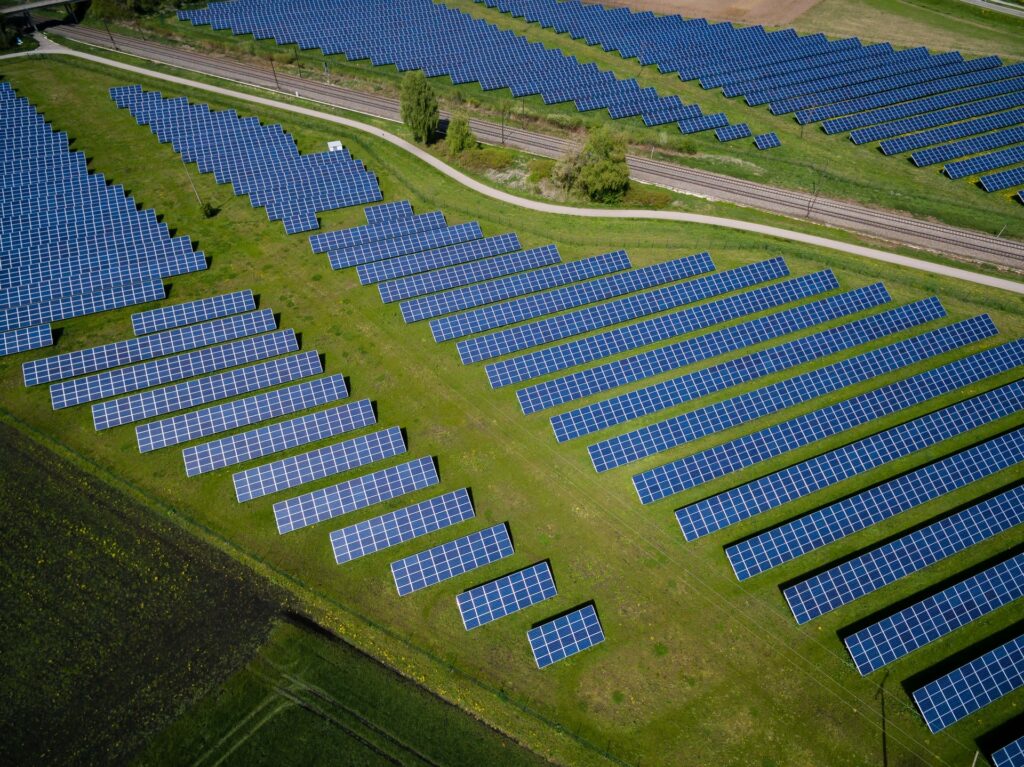
Is Community Solar Available Near You?
Community solar offers many benefits, but it is not available nationwide. To scale these types of projects, state governments must first enable this business model by law. Also, developers are more likely to invest in community solar projects if market conditions are favorable.
Generally, the best states for solar power are those with incentive programs, abundant sunshine and/or high electricity prices. There are currently 40 states with at least one local community solar project in operation, and the Solar Energy Industries Association (SEIA) reported that 3.1 GW of community solar were online and operational by the end of Q1 2021.
There is an optimistic outlook for community solar, and the SEIA has forecast a growth of 4 GW over the next five years. Each gigawatt of solar power can cover the electricity needs of around 186,000 American homes.
If you’re interested in community solar power, you can check local government and utility websites — there could be several projects available near you.
Additional Solar Energy Resources:
FAQs: Community Solar
Like all power generation projects, community solar systems are subject to laws and regulations. If you look for a developer that uses high-quality solar components and qualified installers, community solar is a reliable option to save on power bills for many years.
To join a community solar project, you must become a shareholder with an upfront investment or pay an ongoing subscription. The power bill savings achieved will be higher than your monthly utility payments in both cases, but depending on the pricing model of your community’s program, one option may present a better deal than the other.
Community solar is an alternative to installing your own solar panels: You participate in a shared solar project as a shareholder or subscriber, and you get part of the electricity produced. This is a great option for individuals or companies who can’t install their own solar panel systems due to lack of space or other limitations.
Based on your ownership share or subscription type, you get part of the electricity produced by a community solar array. The kilowatt-hours generated are subtracted from your power bill — just like when you own solar panels directly.
Comparing authorized solar partners
-
- Most efficient panels on the market
- National coverage
- Cradle to Cradle sustainability certification
- Great warranty coverage
- Expensive
- Customer service varies by local dealer
A+Best National Provider1985SunPower Panels25-year all-inclusive warranty
Having trouble deciding? Click below and use our process to receive multiple quotes instead:

 233k
233k  41k
41k  Subscribe
Subscribe 
